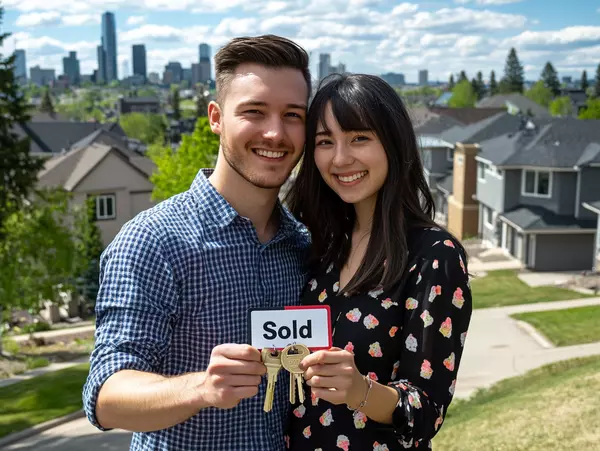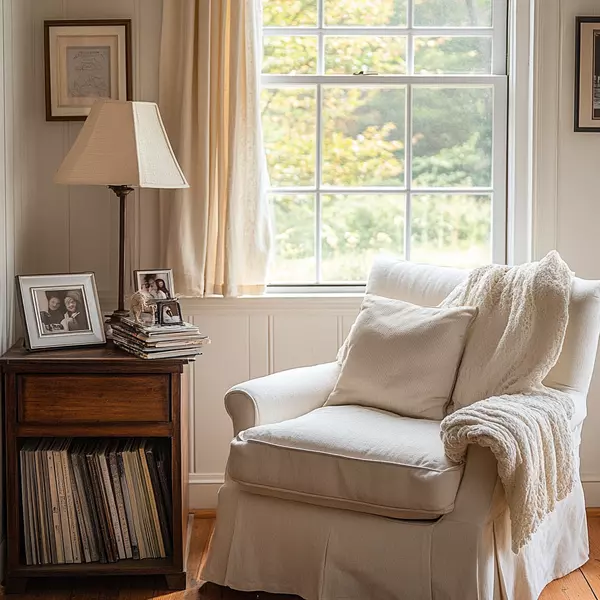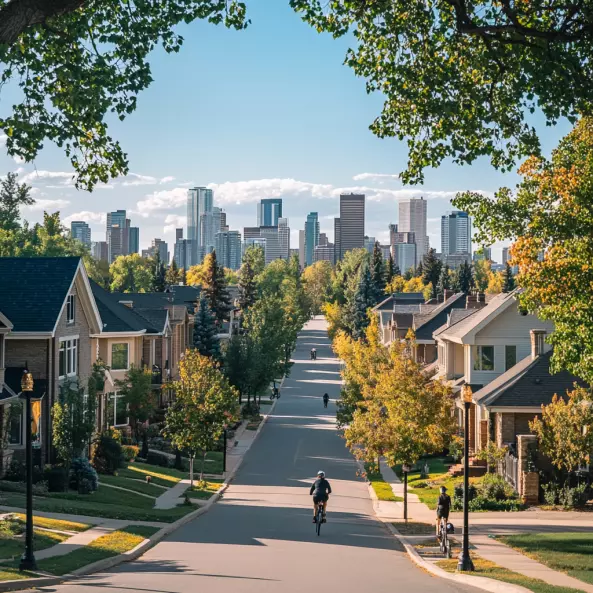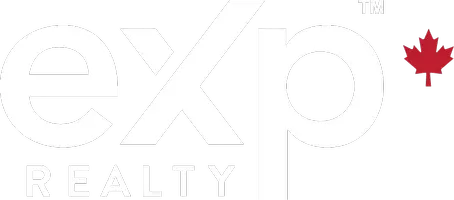
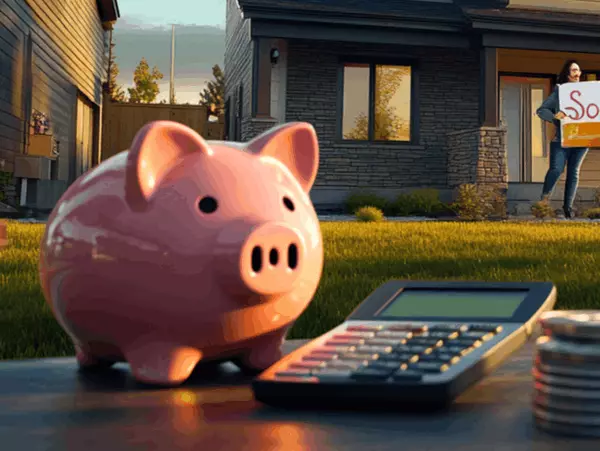
The Ultimate Guide to Down Payments for Homes in Edmonton, Alberta, Canada
Introduction If you’re thinking about buying your first home in Alberta, you’ve probably heard a lot about down payments. It’s one of the biggest financial hurdles for first-time buyers, and figuring out how much you need, how to save, and whether there are assistance programs can feel overwhelming. But don’t worry—I’m here to break it all down in a way that makes sense. In this guide, we’ll cover everything you need to know about down payments in Alberta, from minimum requirements to smart saving strategies and government programs that can help. Let’s get started! Understanding Down Payment Requirements in Alberta The amount you need for a down payment depends on the price of the home: For homes priced at $500,000 or less → Minimum 5% down For homes priced between $500,001 and $999,999 → 5% on the first $500,000 and 10% on the remainder For homes over $1,000,000 → Minimum 20% down If you're a first-time home buyer, you can usually qualify for the minimum 5% down payment, provided you have good credit and meet mortgage requirements. Down Payment Rules for Investment Properties If you’re buying an investment or rental property, you’ll need at least 20% down—no exceptions. Lenders consider investment properties higher risk, which is why they require a bigger upfront investment. Why a Larger Down Payment Can Benefit You If you can save at least 20% for your down payment, you’ll unlock some serious financial perks: ✅ No CMHC Insurance: Avoid Canada Mortgage and Housing Corporation (CMHC) insurance, which costs between 2.8% to 4% of your mortgage loan. That’s thousands in savings! ✅ Lower Monthly Mortgage Payments: A bigger down payment means borrowing less, which lowers your monthly payments. ✅ Less Interest Paid Over Time: Reducing the mortgage amount means you’ll pay less in interest over the life of your loan. ✅ Better Mortgage Rates: Lenders may offer better rates to buyers with a higher down payment, saving you even more over time. How Much Should You Save for a Down Payment? Before setting a goal, assess your financial situation: What is the average home price in the area you’re interested in? How much can you reasonably afford to save each month? Do you have any existing savings you can put toward your down payment? Setting a realistic target will help you stay on track. Best Ways to Save for Your Down Payment Smart Savings Strategies 📌 Track Your Expenses: Use budgeting apps or spreadsheets to see where your money goes and identify areas where you can cut back. 📌 Automate Your Savings: Set up automatic transfers to a high-interest savings account. 📌 Reduce Discretionary Spending: Cutting out unnecessary expenses (like eating out or subscriptions) can free up hundreds per month. Leverage Government Programs Program Benefit Contribution Limits TFSA Tax-free savings for your down payment $7,000 per year RRSP (Home Buyers’ Plan) Withdraw up to $35,000 tax-free Must repay within 15 years FHSA (First Home Savings Account) Tax-free withdrawals & deductible contributions $8,000 per year, $40,000 lifetime limit These accounts help you save faster while minimizing taxes. Down Payment Assistance Programs in Alberta 💰 Alberta PEAK Program – Offers financial assistance for down payments to eligible buyers. 🏡 Municipal Assistance Programs – Cities like Edmonton offer interest-free loans for first-time buyers. 🎁 Gifted Down Payments – Your family can gift you a down payment with no tax implications, as long as it’s a true gift (not a loan). Common Mistakes to Avoid When Saving for a Down Payment 🚫 Ignoring Closing Costs: You’ll need extra savings for legal fees, land transfer taxes, and home inspections. 🚫 Forgetting Homeownership Expenses: Property taxes, insurance, and maintenance costs add up. 🚫 Not Getting Pre-Approved Early: A mortgage pre-approval helps you understand your budget before house-hunting. Final Steps: Moving from Saving to Buying 1️⃣ Get Pre-Approved: Know your budget before you shop.2️⃣ Find the Right Home: Work with a trusted Realtor to find a property that meets your needs.3️⃣ Submit Your Offer: Once your finances are in order, it’s time to make your move! Conclusion Saving for a down payment is one of the biggest steps toward homeownership, but with the right strategies, it’s absolutely achievable. Start early, explore assistance programs, and don’t hesitate to ask for expert advice. Before you know it, you’ll be unlocking the door to your new home! FAQs ❓ What is the minimum down payment for a home in Alberta?The minimum down payment is 5% for homes up to $500,000 and 10% for amounts above that. ❓ Can I use my RRSP for a down payment?Yes! The Home Buyers’ Plan allows you to withdraw up to $35,000 tax-free. ❓ Are there first-time home buyer incentives in Alberta?Yes, Alberta offers down payment assistance programs like PEAK, along with tax-free savings accounts to help you save. ❓ How can I save faster for a down payment?Use government programs, budget carefully, and automate your savings. ❓ What if I don’t have the full down payment?Some municipal assistance programs and gifted down payments can help bridge the gap.
Read More

Unlock Your Dream Home with the RRSP Home Buyers' Plan
Are you tired of paying rent and watching your hard-earned money build someone else’s wealth? It’s time to take control of your financial future. If you’re a first-time homebuyer in Canada, the RRSP Home Buyers' Plan (HBP) could be the key to unlocking your dream home. This program allows you to use your RRSP savings to cover your down payment—without immediate tax consequences. Sounds like a game-changer, right? Let’s dive into how it works and how you can maximize its benefits. Looking for details on all downpayment options? Understanding the Basics of the HBP What is an RRSP? Your Registered Retirement Savings Plan (RRSP) is a tax-advantaged account designed to help Canadians save for retirement. Contributions are tax-deductible, and investments grow tax-free until withdrawal. What is the Home Buyers' Plan? The HBP is a government initiative that allows first-time homebuyers to withdraw up to $60,000 from their RRSP (or $120,000 for couples) to buy or build a home. The best part? No immediate tax hit—just a structured repayment plan. Eligibility Criteria To qualify for the HBP, you must: Be a first-time homebuyer (or haven’t owned a home in the last four years). Be a Canadian resident. Have a written agreement to purchase or build a qualifying home. Intend to live in the home within one year. Have the necessary funds in your RRSP. How the HBP Works Here’s a step-by-step guide: Contribute to your RRSP at least 90 days before withdrawing. Complete Form T1036 to request the withdrawal. Withdraw your funds tax-free. Use the money toward your down payment. Begin repayments two years later, over a 15-year period. Benefits of Using Your RRSP for a Home Purchase Tax Savings: RRSP contributions are tax-deductible, and you won’t pay taxes on withdrawals under the HBP. Bigger Down Payments: Access more funds for your dream home. Lower Borrowing Costs: Avoid or reduce mortgage default insurance by putting down a larger amount. Strategic Tips for Maximizing the HBP Time Your Contributions: Make sure funds have been in your RRSP for at least 90 days to qualify. Boost Savings with Tax Refunds: Contribute your down payment savings to your RRSP, get a tax refund, and use it for home-buying costs. Coordinate as a Couple: Work with your partner to withdraw up to $120,000 combined. Repayment Obligations You must repay the withdrawn amount over 15 years, starting two years after the withdrawal. Miss a payment? The amount will be added to your taxable income for that year. Setting up automatic contributions can help you stay on track. Temporary Repayment Relief Good news: Withdrawals made between January 2022 and December 2025 have an extended grace period of five years before repayments begin. This gives you more breathing room as you settle into homeownership. Long-term Financial Considerations While the HBP is fantastic for homebuyers, remember to balance short-term goals with long-term needs. Using your RRSP for a home may delay retirement savings growth. Common Pitfalls to Avoid Missing Deadlines: Late repayments can lead to tax penalties. Overestimating Affordability: Don’t stretch yourself too thin financially. Neglecting Retirement: Ensure you have a plan to replenish your RRSP. How to Prepare for Using the HBP Consult with financial advisors to understand how the HBP fits into your broader goals. Save strategically, and contribute early. Study market trends to time your purchase effectively. Case Studies Success Story:Emma and Liam, a young Edmonton couple, used the HBP to access $120,000 for their first home. By coordinating withdrawals and leveraging tax refunds, they achieved homeownership with no mortgage default insurance. Comparing the HBP with Other First-Time Buyer Programs The HBP is just one of many incentives. Compare it with programs like the First-Time Home Buyer Incentive (FTHBI) to determine the best fit for your situation. Conclusion The RRSP Home Buyers' Plan is a powerful tool that can bring you closer to owning your dream home in Edmonton. By planning strategically and consulting with professionals, you can make the most of this opportunity. Remember, it’s not just about buying a home—it’s about building your future. FAQs Can I use the HBP if I’ve owned a home before?Yes, if you haven’t owned a home in the last four years. What happens if I miss a repayment?Missed repayments are added to your taxable income for that year. Can I use the HBP for a vacation home?No, the home must be your primary residence. Are there penalties for early repayment?No, you can repay earlier without any penalties. Can I combine the HBP with other programs?Absolutely! Many first-time buyers pair the HBP with the FTHBI or provincial grants.
Read More

Everything You Need to Know About Closing Costs When Buying a Home in Edmonton
Introduction Buying your first home in Edmonton is an exciting milestone, especially for newcomers to Canada. But amidst all the excitement, one thing that often catches first-time homebuyers off guard is closing costs. In this guide, we’ll break down everything you need to know about closing costs in Alberta, helping you be fully prepared when it's time to sign on the dotted line. What Are Closing Costs? Simply put, closing costs are the fees and expenses you need to pay when finalizing the purchase of a home. These can range from legal fees to inspection costs, and they generally add up to between 3% and 5% of your home’s purchase price. Knowing what these costs are upfront will ensure you’re not caught off guard at the last minute. The Down Payment The down payment is the largest upfront cost when buying a home. In Alberta: Homes under $500,000 require a 5% down payment. For homes priced between $500,000 and $999,999, you'll pay 5% of the first $500,000 and 10% of the remaining amount. If the home costs $1 million or more, expect a 20% down payment. Saving for your down payment takes time and planning. Consider using a Tax-Free Savings Account (TFSA) to grow your savings tax-free. Looking for details on all down payment options? Mortgage Default Insurance If your down payment is less than 20%, you’ll need to pay for mortgage default insurance. This cost ranges between 2.8% and 4% of the mortgage amount and can be added to your mortgage. While it’s an added expense, it allows you to buy a home without having to save 20% upfront. Legal Fees In Alberta, you’ll need a lawyer to handle the legal paperwork of buying a home. Legal fees typically range between $500 to $1,500. It’s wise to shop around and find a lawyer who offers a good rate and experience with first-time homebuyers. Property Insurance Before you can finalize your purchase, your lender will require proof of property insurance. This typically costs between $500 and $1,500 annually, but you can often get a better deal by bundling home and auto insurance. Home Inspection Costs Though not mandatory, a home inspection is one of the best investments you can make when buying a home. For a typical home in Edmonton, expect to pay between $300 to $500. A home inspection can save you from future headaches by identifying potential issues before closing the deal. Property Appraisal Your lender might require a property appraisal to verify the home’s value. Appraisals generally cost between $300 to $500, but some lenders include this service as part of their mortgage package, so it’s worth asking. Title Insurance Title insurance protects you from potential legal disputes over property ownership. This is a one-time fee that usually costs around $350, but it offers long-term protection. Land Transfer Fees Unlike other provinces, Alberta doesn’t have a land transfer tax, but you will need to pay a small land transfer fee. This typically ranges between $200 and $1,000, depending on the home’s value. GST on New Homes If you’re buying a newly built home, GST applies at 5%. However, if your home is priced under $450,000, you could qualify for a partial rebate. This can significantly reduce your costs, so be sure to discuss this with your builder or realtor. Adjustment Costs At closing, you may need to reimburse the seller for any prepaid property taxes or utilities. These adjustment costs can range between $300 and $500, so it’s important to budget for them. Budgeting for Closing Costs It’s a good idea to budget conservatively for your closing costs. Plan for costs to be on the higher end of the 3% to 5% range, just to be safe. Also, ask your realtor or lawyer for a detailed estimate early in the process so you’re fully prepared. Conclusion Being prepared for closing costs is a critical part of buying a home in Edmonton. By understanding what to expect and planning ahead, you’ll avoid surprises and make your home-buying experience much smoother. As always, consult with your realtor, lawyer, and mortgage broker to get personalized advice based on your specific situation. FAQs 1. Can I roll closing costs into my mortgage?No, in Canada, closing costs must be paid upfront and cannot be added to your mortgage. 2. Are home inspections mandatory in Alberta?No, but they are highly recommended to identify any potential issues with the home. 3. Do first-time buyers in Alberta get any discounts on closing costs?There are no specific discounts for first-time buyers, but Alberta offers various programs to help offset the costs. 4. What happens if I don’t have enough saved for closing costs?If you don’t have enough saved for closing costs, your mortgage might not get approved, so it’s essential to budget carefully. 5. Can I negotiate closing costs with the seller?In some cases, yes. You may be able to negotiate for the seller to cover certain closing costs, but this depends on the market conditions and the agreement you reach.
Read More
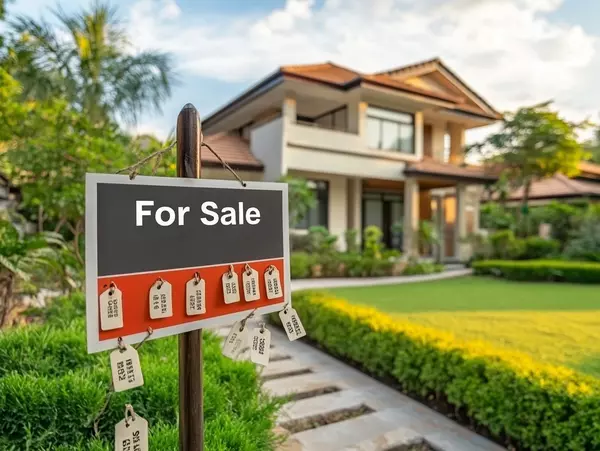
Why You Should Never Underprice Your Home: A Comprehensive Guide to Pricing for Maximum Profit
Introduction: Why Pricing Your Home Right is Crucial Pricing your home isn’t just about slapping a number on it and hoping for the best. It’s one of the most critical decisions you’ll make in the selling process. Why? Because the price tag you set can either draw in serious buyers or scare them away. The right price helps you sell quickly and profitably, while underpricing could cost you tens of thousands of dollars. In this guide, we’ll explore why pricing too low is risky and how to ensure you get the best possible price for your home. The Importance of Proper Home Pricing Setting the correct price for your home is not about guesswork; it's a strategic decision. A well-priced home attracts more buyers, increases competition, and ensures that you sell it faster, maximizing your profit. On the other hand, a poorly priced home can sit on the market for months or lead to regret after the sale. Why Pricing Too Low Hurts Your Sale Financial Losses and Undervaluation Depending on the market at the time, when you underprice your home, you're essentially could be leaving money on the table. Whether you’re trying to attract more buyers with a lower price or simply misjudge your home’s market value, this strategy often backfires if you don't have a complete marketing strategy that guarantees maximum exposure to your home. Selling below market value means you miss out on potential profit that could make a significant difference in your financial future. Market Perception of a Low Price Think about it: It truly depends on the market but think about it, what do buyers assume when they see a low price tag? In many cases, if the market isn't a strong sellers market in Edmonton, a low price can raise red flags. Buyers may wonder, "What’s wrong with this home?" or assume that the seller is desperate. This perception can actually reduce buyer interest and weaken your negotiating position. If it is a strong sellers market, it is essential that there is a strategy of maximum exposure so that the entire market is aware of your home. Conducting a Comparative Market Analysis (CMA) What is a CMA and How Does It Work? A Comparative Market Analysis (CMA) is a critical tool used by real estate professionals to determine the market value of a home. This analysis involves comparing your home to similar properties that have recently sold in your area. Think of it as creating an "Apples to Apples" comparison. By looking at homes with similar features and amenities, you can better understand what buyers have most recently paid for a home like yours and give us some idea as to what home buyers in Edmonton are willing to pay. Analyzing Comparable Homes When conducting a CMA, you’ll want to focus on homes that have sold within the last 3-6 months depending on the current real estate market in Edmonton. These homes should be a similar style and in the same general location. They should have similar square footage, lot size, and number of bedrooms and bathrooms. This helps create an accurate picture of how your home should be priced. Adjusting for Differences Not every home will be an exact match to yours. Maybe your home has a larger lot or more recent renovations than comparable properties. Adjusting for these differences—like adding value for a newly remodeled kitchen—can help you avoid underpricing your home. Getting Professional Assistance The Realtor’s Role in Pricing Real estate agents have access to comprehensive market data and tools that help them provide an unbiased, accurate estimate of your home’s value. It is imperative that you select a Realtor who brings an objective eye and a wealth of experience, ensuring you set the right price for your home. Benefits of a Professional Appraisal For homes with unique features or those in areas with few comparable sales, hiring a professional appraiser can offer additional assurance that you’re pricing your home correctly. An appraiser’s detailed analysis goes beyond what a CMA can provide, helping you understand your home’s true market value. Factors that Influence Your Home’s Value Location and Market Conditions Location is one of the biggest factors that determine your home’s value. Whether you live in a bustling urban center or a quiet suburban neighborhood, the area’s desirability, school districts, and local amenities all play a role in how buyers perceive your home. It is even important to understand how what your home backs on could increase or decrease the value of your home. Similarly, the current market conditions—whether it’s a buyer’s or seller’s market—impact how much buyers are willing to pay. Condition and Upgrades Most of today's home buyers in Edmonton love move-in-ready homes. If your home is well-maintained or includes modern upgrades like energy-efficient windows or a newly renovated kitchen, this can significantly increase its value. However, outdated or poorly maintained homes will often struggle to fetch top dollar. Be careful though, there are many upgrades that you many nener get your money back, The Power of Unique Features Does your home have a one-of-a-kind feature, like a stunning view or a custom-built deck? Highlighting these elements in your pricing strategy can help justify a higher price, ensuring you don’t undervalue the unique aspects of your home. It is also important to note, some of these features may not bring much value dollar wise, but they will help the buyer choose your home vs, the competition. Avoiding Common Pricing Mistakes Online Valuation Tools and Their Limitations Online home valuation tools, like Zillow’s Zestimate, can give you a ballpark figure for your home’s value, but they’re not RARELY accurate. These tools often miss out on critical factors like recent renovations, unique features, or the current condition of your home. Don’t rely solely on these tools when setting your price. Pricing Psychology and Buyer Perception Buyers typically search for homes within specific price brackets, like $250,000 to $300,000. Pricing your home at $299,000 instead of $300,000 can make it impossible for the buyers to know your home is on the market if they are searching in the next price bracket of 4300,000 TO $350,000. This probably is one of the biggest mistakes that home sellers and their real estate sale people make. Leaving Room for Negotiation While you don’t want to price too high, leaving a little room for negotiation can also be a massive error depending on the market. If the market is hot, leaving too much room for negotiations can have a buyer believe that the seller is not going to be interested in negotiating and so they write an offer on another home. Setting your price slightly (Less than 2%) above your bottom line gives you the flexibility to entertain offers without compromising your financial goals. Conclusion Pricing your home is both an art and a science. It’s about understanding the market, knowing your home’s value, having an aggressive marketing strategy, and working with professionals who can help you navigate the complexities of the selling process. By avoiding common pricing mistakes and leveraging expert advice with advanced home marketing techniques, you can confidently set the right price for your home in the Edmonton region and maximize your return. FAQs How does a CMA help with pricing? A CMA compares your home to similar properties that have recently sold, helping you determine a fair market value. Can I rely on online valuation tools? Online tools are a good starting point, but they often miss important details like upgrades and local market conditions. Why shouldn’t I price my home too low? Underpricing can lead to financial loss and may attract buyers who think something is wrong with the home. How do unique features affect my home’s value? Unique features, like a great view or high-end finishes, can justify a higher asking price. When should I get a professional appraisal? A professional appraisal is helpful when your home has unique features or there are few comparable properties in your area.
Read More
Categories
- All Blogs (22)
- downsizing (2)
- Eco-friendly Homes (1)
- Edmonton Bylaws (2)
- Events & Community News (4)
- First Time Home Buyer (4)
- Gardening & Landscaping (1)
- Home Buying Tips (14)
- Home Insurance (2)
- Home Selling Tips (6)
- How to (9)
- increase home value (8)
- Interior Design (1)
- Local Market Trends (8)
- market Influences (11)
- Market Update (9)
- Migration (2)
- Mortgage Info (2)
- Moving & Relocation (8)
- Neighborhood Profiles (4)
- Real Estate FAQs (15)
- Real Estate Investment (1)
- Real Estate Laws & Regulations (2)
- Technology in Real Estate (2)
Recent Posts






